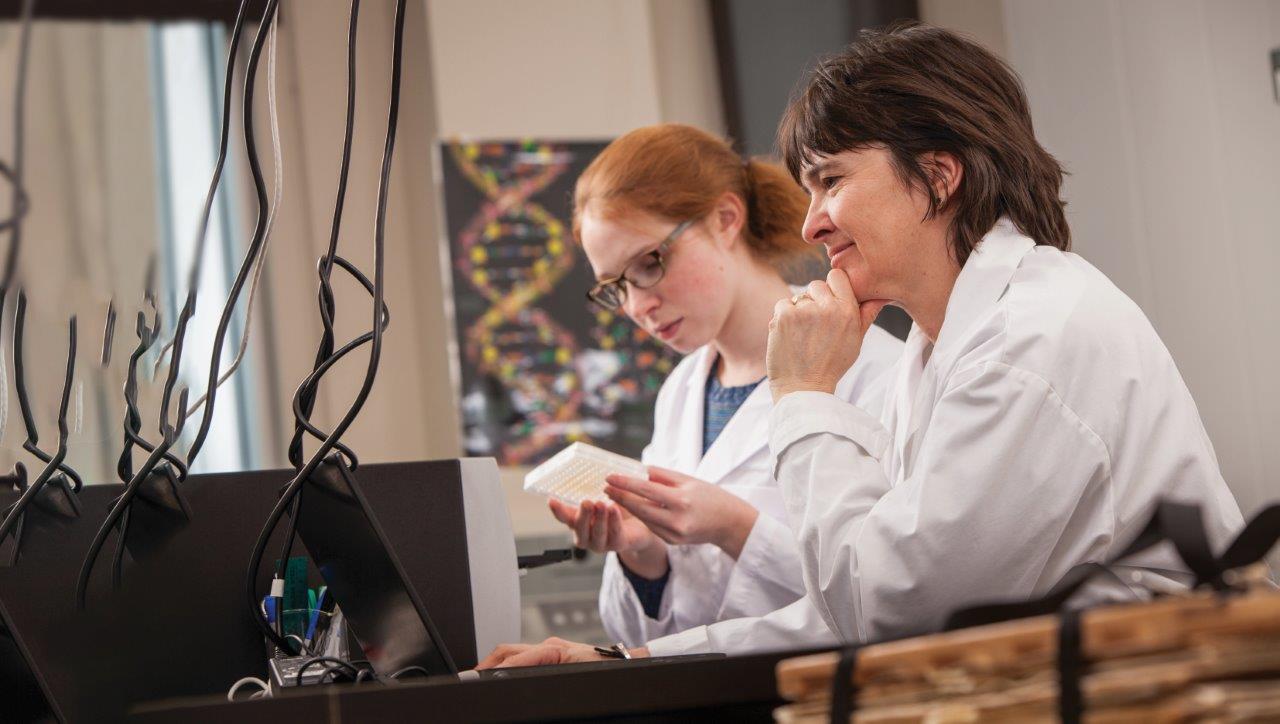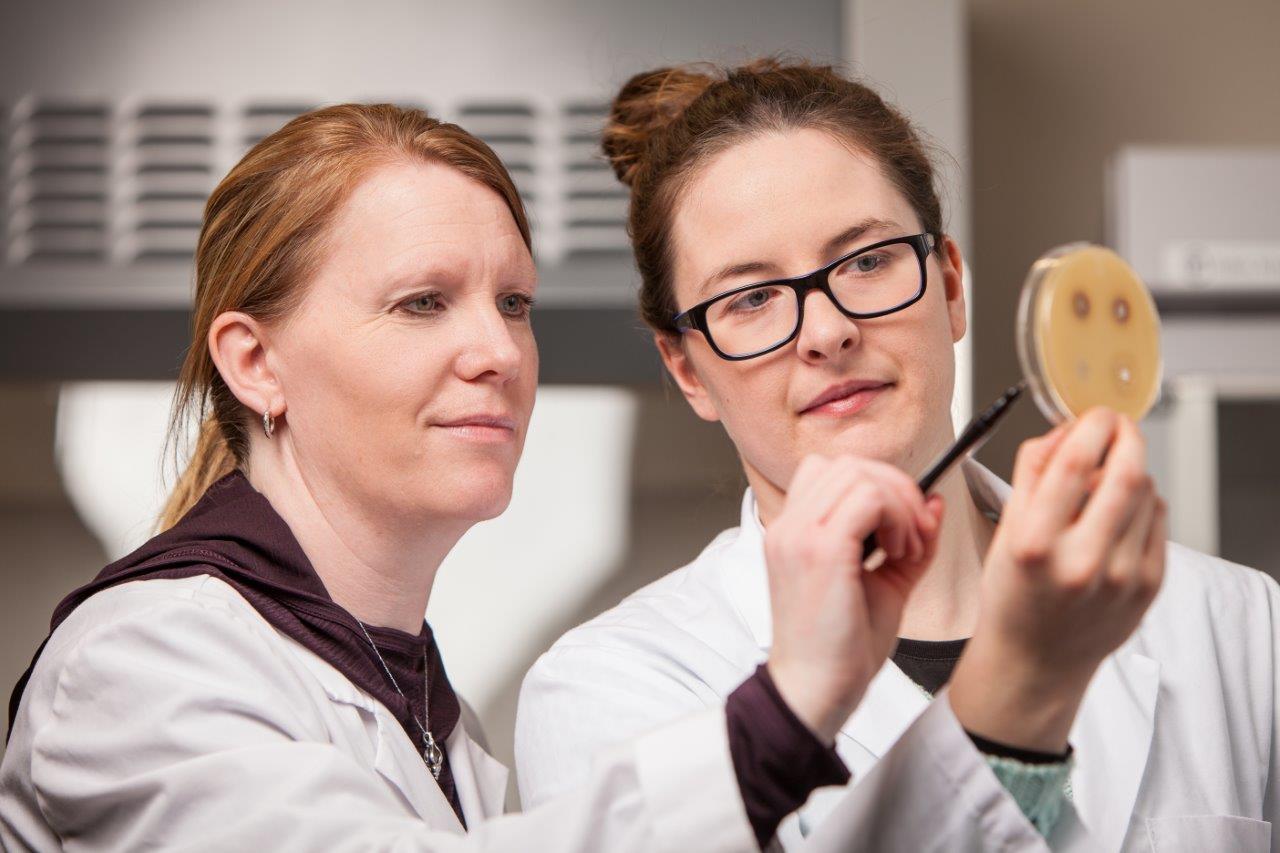
Lethbridge College will join an international effort to raise awareness of antibiotics and the human cost of antibiotic-resistant bacteria.
Two events are planned on campus during the World Health Organization’s Antibiotic Awareness Week, Nov. 18 through 24, giving students and staff alike an opportunity to arm themselves with knowledge about infection prevention and antibiotic resistance.
Lethbridge College microbiology senior research scientist Dr. Sophie Kernéis, lab technician Leanne DuMontier and instructor Dr. Roshanee De Silva will hold an open house in a fourth-floor laboratory in the Cousins Building (CB4009) from 11 a.m. to 1 p.m. Wednesday, Nov. 20. Visitors will get a chance to view the microbes living inside their own mouths. In addition to microscopic views of cheek swabs, Kernéis, DuMontier and De Silva will share information about bacteria and the life-and-death challenge of antibiotic resistance.
From 11 a.m. to 2 p.m., Thursday, Nov. 21, nursing students working with the campus Wellness Centre will hold an information display in Centre Core about antibiotics, sharing information from the World Health Organization.
“The World Health Organization estimates if we don’t do anything to address antimicrobial resistance, by 2050, 10 million deaths may occur annually,” Kernéis says. “Already there are common infectious diseases that are becoming difficult to treat.”
An expert panel recently issued a report warning the rise in bacterial infections resistant to treatment is likely to cost Canada 396,000 lives by 2050.

Kernéis leads the Antibiotic Alberta Plant Project, a Lethbridge College research project that is testing plants native to Alberta in hopes of discovering new antibiotic molecules for medical, agricultural or other uses. Sir Alexander Fleming discovered penicillin in 1928, leading to the Golden Age of antibiotics from 1950 to 1960. Over the last 30 years, very few new antibiotics have been discovered.
The challenge of antibiotic resistance is the result of mutation that occurs in living cells that sometimes would allow bacteria to grow in presence of the drug. The propagation of these antibiotic resistance genes is increased due to the fast division of bacteria and their ability to transfer genes to bacteria that are around them even if they are not genetically related. That genetic information can be transferred as easily as mobile phone users can transfer contact information between devices, DuMontier says. In other words, bacteria can adapt to survive antibiotics. (To see bacteria evolve and spread, watch this two-minute video from Harvard Medical School.)
How can you help? The World Health Organization says you can reduce the risk of infection and the spread of antibiotic resistance by:
- Washing your hands properly;
- Preparing food hygienically;
- Limiting close contact with others when you are sick;
- Practicing safe sex;
- Keeping your vaccinations up to date;
- Supporting the human right to safe water and sanitation;
- Not sharing antibiotics with others;
- And following the advice of qualified health care professionals when taking antibiotics.
Kernéis says she hopes people come away from the events with a better appreciation of basic information on infections: antibiotics cannot treat viruses; antibiotic resistance affects people all around the world and even very common infections can become fatal; and it will take change by individuals, institutions and industries involved in human and livestock health to address the issue.